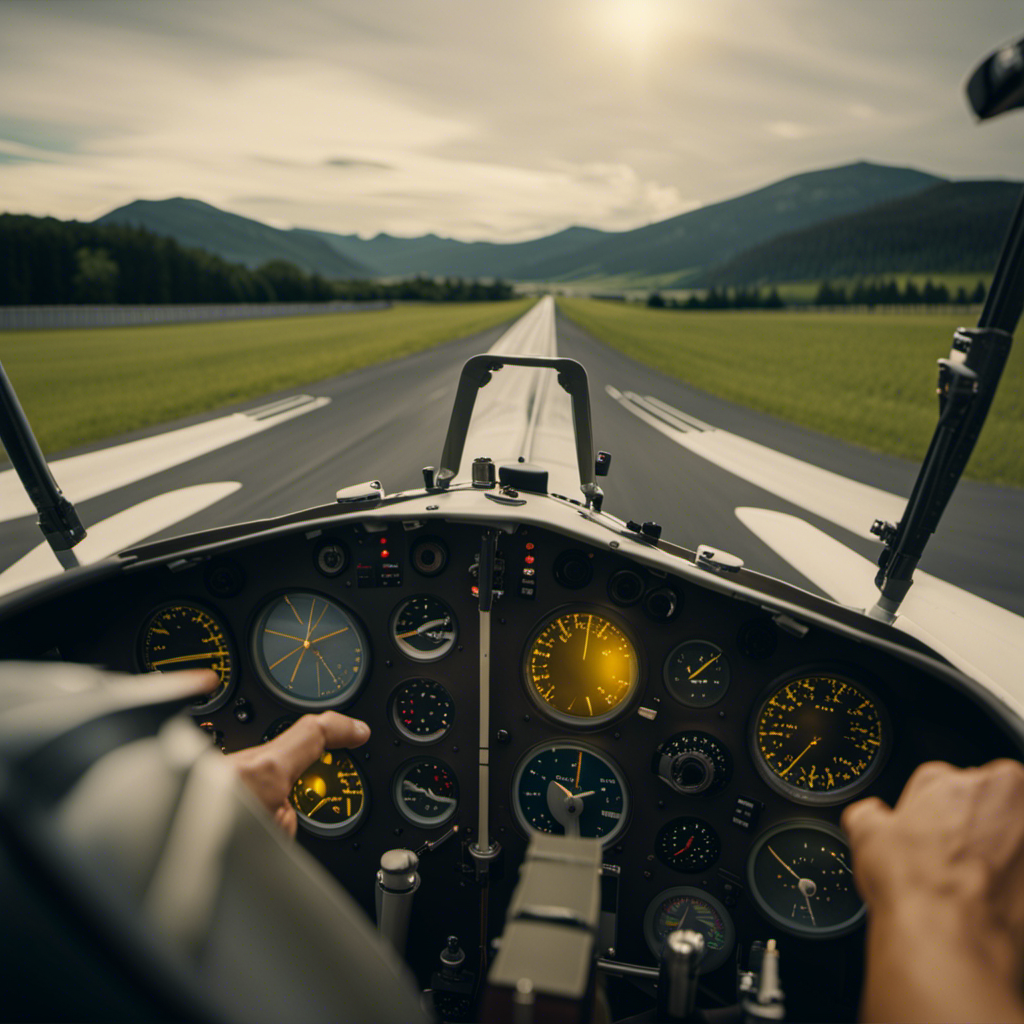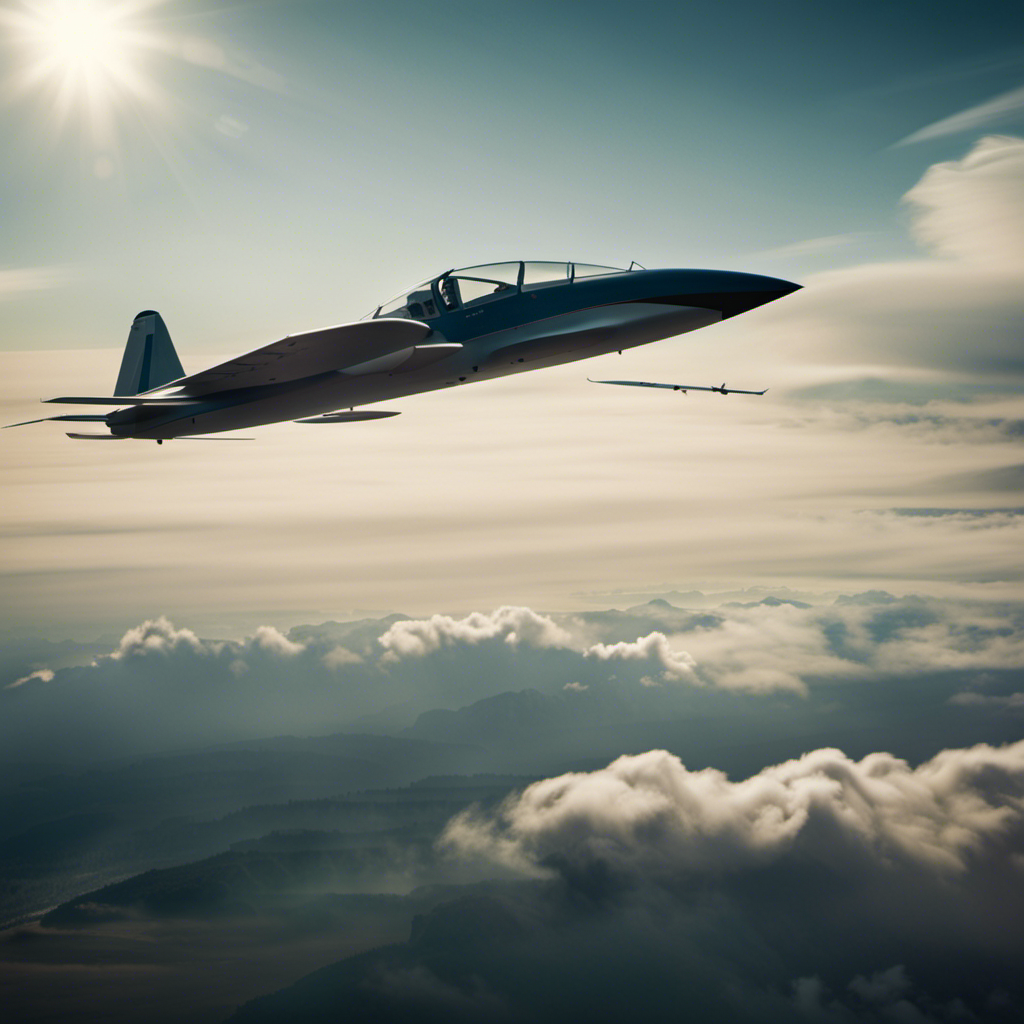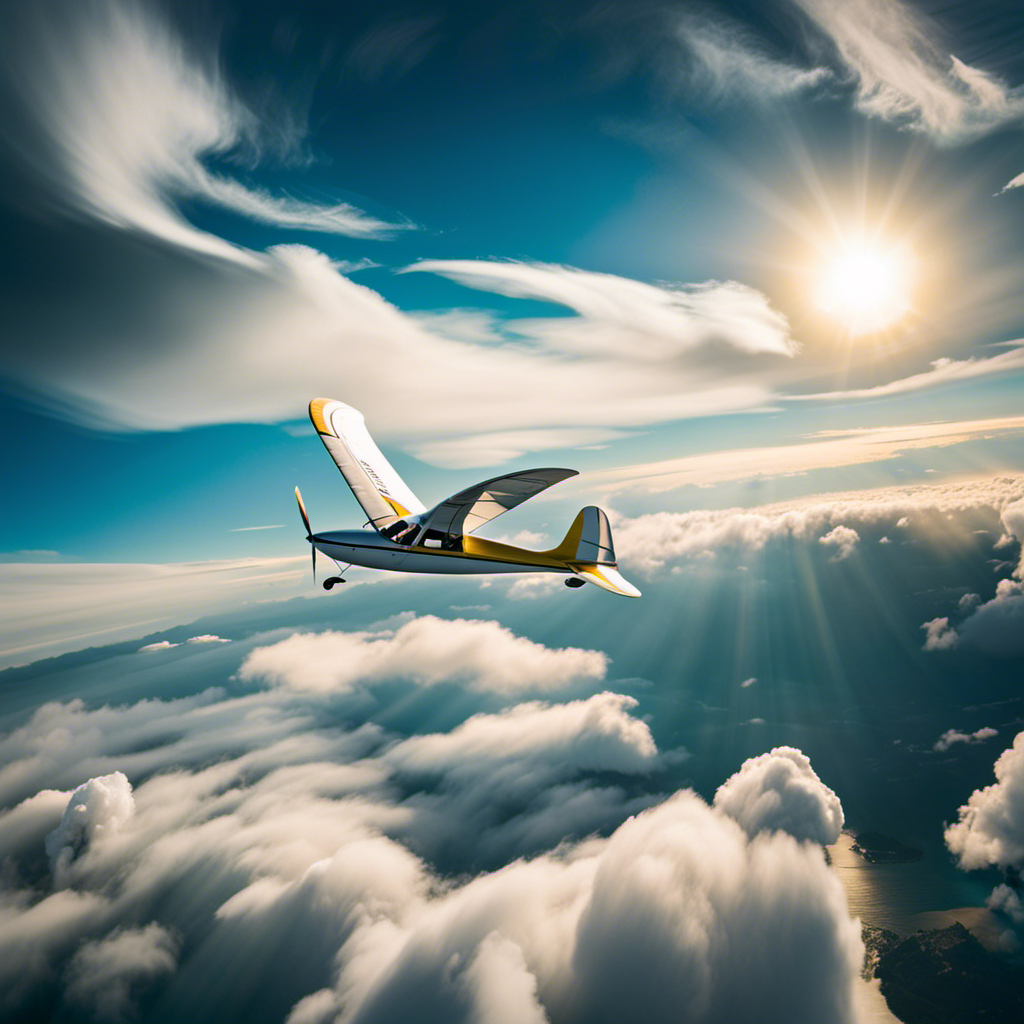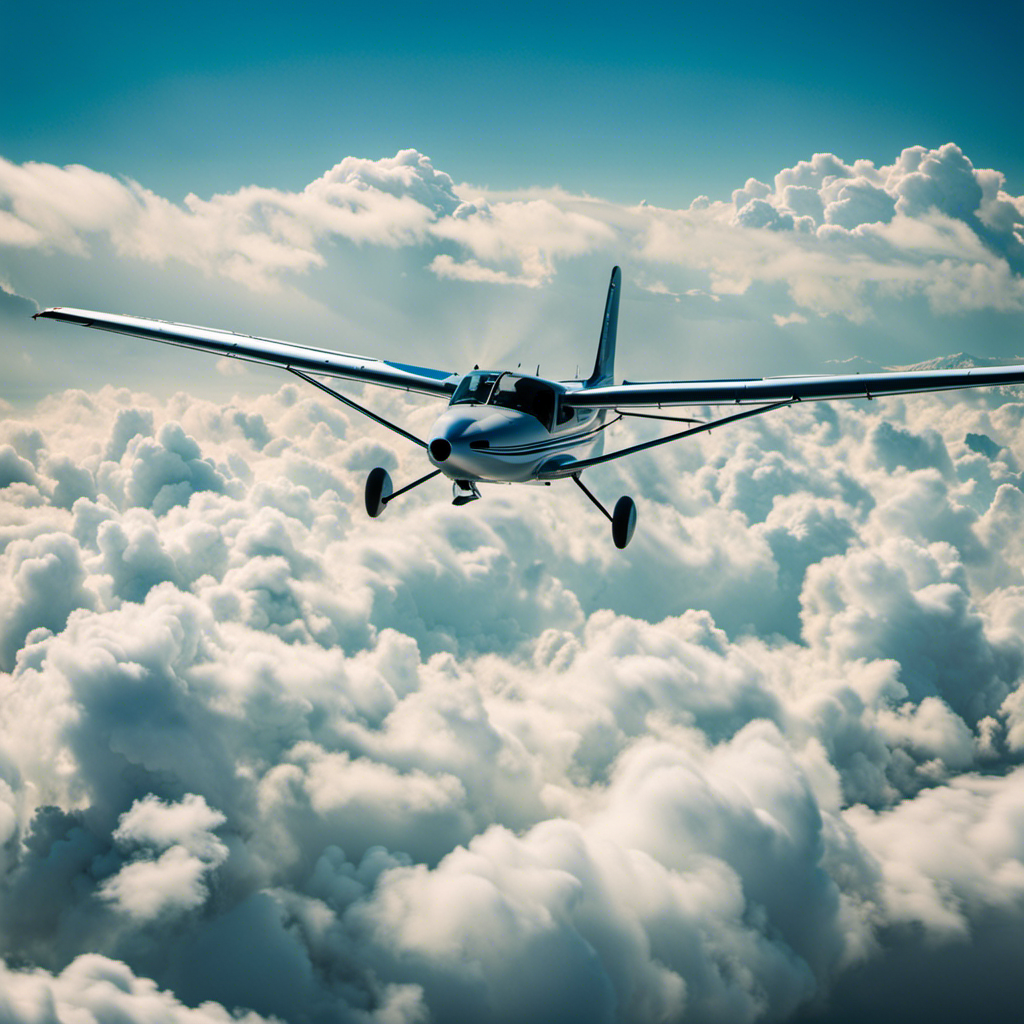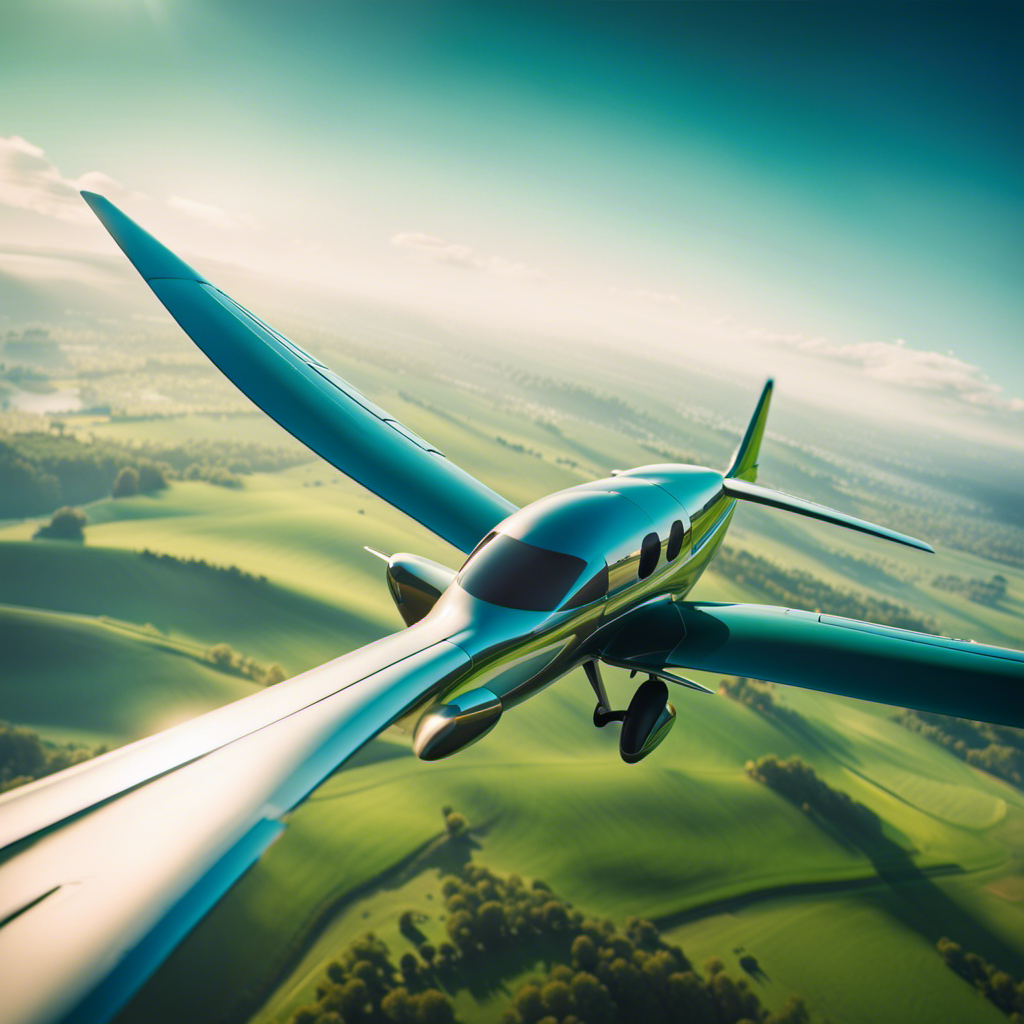When flying gliders, my main focus is on safety, for both myself and others up in the sky. Avoiding a crash with another plane requires sharp focus, effective communication, and excellent piloting abilities. If you want to stay safe in the sky, these **key skills** are essential. So buckle up and get ready to learn how to soar safely through the skies!
In this article, I will delve into the actions that a glider pilot must take to ensure the utmost safety in the sky. By maintaining constant awareness, adhering to proper procedures, and continuously improving safety protocols, we can navigate the skies with confidence and minimize the risk of a devastating collision.
Key Takeaways
- Adjust altitude and speed for better visibility
- Utilize proper scanning techniques to spot other aircraft
- Follow recommended procedures for collision avoidance
- Stay informed about forecasted weather conditions and adjust flight plans accordingly to minimize collision risks
Maintain Constant Vigilance
The pilot must always be on the lookout to avoid any potential head-on collisions. Maintaining situational awareness is crucial in ensuring the safety of both the glider and other aircraft in the vicinity. To achieve this, I utilize effective scanning techniques that involve constantly checking my surroundings for any approaching aircraft.
I scan the sky by systematically moving my eyes from left to right, top to bottom, and vice versa, ensuring I cover the entire airspace around me. By doing so, I can quickly identify any potential threats and take necessary evasive actions to avoid a head-on collision.
Maintaining constant vigilance and utilizing proper scanning techniques are vital steps in ensuring the safety of all aircraft in the airspace. This awareness sets the foundation for effective communication and radio procedures, which I will discuss in the next section.
Use Proper Communication and Radio Procedures
Make sure you use proper communication and radio procedures to prevent a head-on collision with an airplane while flying your glider. Clear and concise communication is of utmost importance in aviation, especially when it comes to avoiding collisions. Here are three key reasons why:
-
Effective communication allows pilots to exchange important information about their position, intentions, and any potential hazards. This information helps maintain situational awareness and enables pilots to make informed decisions to avoid conflicts.
-
The pilot’s situational awareness plays a crucial role in collision avoidance. By constantly assessing their surroundings, pilots can anticipate potential conflicts and take proactive measures to prevent them. This includes actively listening to radio communications and being aware of other aircraft in their vicinity.
-
Following proper radio procedures ensures that all communications are clear, concise, and easy to understand. This reduces the chances of misunderstandings or miscommunications that could lead to a collision.
Follow Air Traffic Control Instructions
Remember to always follow air traffic control instructions while flying your glider to ensure safe and efficient communication with other aircraft. Air traffic control procedures are crucial for maintaining order and avoiding collisions in the skies.
As a pilot, it’s our responsibility to adhere to these procedures and cooperate with air traffic controllers to ensure the safety of everyone involved. By following their instructions, we can prevent potential conflicts, especially in busy airspace. It’s important to stay vigilant and responsive to any instructions given by the air traffic controllers.
This includes maintaining proper altitude, speed, and heading, as well as reporting any changes or deviations promptly. By doing so, we contribute to a harmonious and secure airspace environment.
Moving forward, let’s discuss the importance of monitoring transponder and ADS-B traffic.
Monitor Transponder and ADS-B Traffic
Please ensure you’re monitoring the transponder and ADS-B traffic while flying your glider to maintain situational awareness and enhance safety in the airspace. As a pilot, it’s crucial to stay updated on aviation regulations and receive proper pilot training to understand the importance of monitoring these systems.
Here are three reasons why monitoring the transponder and ADS-B traffic is essential:
-
Compliance with aviation regulations: By monitoring these systems, you are ensuring compliance with regulations that require you to have a functional transponder and utilize ADS-B technology in certain airspace.
-
Increased situational awareness: Monitoring the transponder and ADS-B traffic allows you to be aware of the presence and location of other aircraft in your vicinity, helping you make informed decisions to avoid potential conflicts.
-
Enhanced safety: By actively monitoring these systems, you are actively contributing to the overall safety of the airspace, reducing the risk of mid-air collisions and maintaining a safe flying environment.
Perform Regular Scanning and Visual Checks
To enhance your safety and situational awareness while flying, regularly scan the airspace and visually check for any nearby aircraft. Performing regular scanning and maintaining airspace awareness are crucial for avoiding head-on collisions with airplanes. By constantly scanning the airspace around you, you can identify any potential threats and take appropriate evasive action. Visual checks, such as looking out of the cockpit windows and using peripheral vision, can provide additional information about the presence and proximity of other aircraft. By combining both scanning techniques, you can effectively detect any aircraft that may be in your vicinity and take the necessary steps to avoid a collision. The table below summarizes the key points for performing regular scanning and maintaining airspace awareness.
| Regular Scanning | Airspace Awareness |
|---|---|
| – Scan the airspace at regular intervals | – Be aware of your location in relation to other aircraft |
| – Use a systematic scanning pattern | – Maintain a mental picture of the surrounding airspace |
| – Focus on different areas of the sky | – Monitor radio communications for other aircraft |
| – Look for any signs of aircraft movement | – Adjust your flight path if necessary |
Utilize Proper Navigation and Position Reporting
After performing regular scanning and visual checks, it is crucial for a pilot to utilize proper navigation techniques and effective position reporting.
These practices are essential to ensure a safe and efficient flight, especially when avoiding head-on collisions with airplanes.
Proper navigation involves using instruments such as GPS and VOR to determine the aircraft’s position accurately. By constantly monitoring and adjusting the aircraft’s heading and altitude, the pilot can navigate through airspace with precision.
Additionally, effective position reporting allows pilots to communicate their location to air traffic controllers and other aircraft in the vicinity. This ensures that everyone is aware of each other’s positions, reducing the risk of mid-air collisions.
Maintain Adequate Separation Distances
Ensure you maintain adequate separation distances between your aircraft and other aircraft to minimize the risk of mid-air collisions. This is crucial for safe flying and avoiding potential accidents.
There are two key strategies to achieve this: maintaining visual contact and utilizing flight instruments. By doing so, you can effectively monitor the position and movement of other aircraft around you.
Visual contact allows you to physically see nearby aircraft and assess their proximity to your own. Flight instruments, such as radar and transponders, provide vital information about the location and altitude of other aircraft, even if they are not within your line of sight.
By combining these two methods, you can ensure a comprehensive understanding of your surroundings and make informed decisions to maintain the necessary separation distances.
Transitioning to the importance of weather conditions and visibility, it is crucial to be aware of the environmental factors that can affect your ability to maintain separation distances.
Be Aware of Weather Conditions and Visibility
When it comes to avoiding head-on collisions with airplanes while piloting a glider, maintaining adequate separation distances is crucial. However, it is also important for glider pilots to be aware of weather conditions and visibility. Being knowledgeable about the weather can greatly enhance safety during flight. As a glider pilot, I must pay close attention to the forecasted conditions and make informed decisions based on that information.
Here are some key points to consider:
-
Piloting techniques:
-
Adjusting altitude and speed to optimize visibility.
-
Utilizing proper scanning techniques to spot other aircraft.
-
Flight planning:
-
Choosing flight routes that minimize the risk of encountering other aircraft.
-
Considering time of day and weather patterns that may affect visibility.
Practice Proper Collision Avoidance Maneuvers
To effectively practice proper collision avoidance maneuvers, it’s important for glider pilots to familiarize themselves with the necessary techniques and procedures.
One crucial aspect of this is regularly practicing emergency maneuvers. By simulating potential collision scenarios and practicing evasive actions, pilots can develop the muscle memory and reflexes needed to react swiftly and effectively in real-life situations.
Additionally, it’s essential for glider pilots to thoroughly understand airspace regulations. This knowledge allows pilots to navigate through different airspace classes, communicate effectively with air traffic control, and maintain situational awareness to avoid potential conflicts with other aircraft.
Continuously Update and Improve Safety Procedures
As a pilot, it is crucial to continuously update and improve safety procedures to enhance collision avoidance in the air. By staying up-to-date with the latest safety technology and analyzing collision data, we can identify areas for improvement and implement effective measures to mitigate the risk of head-on collisions with airplanes.
Here are some key steps to consider:
- Regularly update and maintain the glider’s collision avoidance systems to ensure optimal functionality.
- Stay informed about advancements in safety technology, such as traffic alert and collision avoidance systems (TCAS), to enhance situational awareness.
- Conduct regular reviews of collision data and analyze trends to identify potential risk factors and develop proactive measures.
- Participate in safety training programs and workshops to enhance knowledge and skills related to collision avoidance.
- Collaborate with aviation authorities and organizations to share best practices and encourage the development of standardized safety procedures.
Frequently Asked Questions
What are some common collision avoidance maneuvers that glider pilots can use?
As a glider pilot, I employ various collision avoidance maneuvers to maintain separation distances. These maneuvers include altering my course, adjusting my altitude, and communicating with other pilots to ensure safe flying conditions.
How can glider pilots maintain adequate separation distances?
To maintain adequate separation distances, I must consider weather conditions for glider flying and maintain clear communication with air traffic control. This ensures I can make informed decisions and navigate safely to avoid any potential collisions with airplanes.
What are some examples of proper navigation and position reporting techniques for glider pilots?
To ensure safe navigation and communication as a glider pilot, I employ proper communication techniques and maintain a thorough understanding of airspace. By effectively relaying my position and intentions, I increase awareness and reduce the risk of collision with other aircraft.
How can glider pilots use their transponder and ADS-B traffic monitoring systems effectively?
To effectively use my transponder as a glider pilot, I need a thorough understanding of ADS-B technology. This allows me to monitor traffic and take necessary evasive actions to avoid head-on collisions with airplanes.
What are some tips for glider pilots to practice and improve their safety procedures?
To enhance safety procedures, glider pilots must focus on improving pilot communication and mastering emergency procedures. Effective communication ensures clear instructions and coordination, while emergency procedures allow quick and efficient response in critical situations.
Conclusion
In conclusion, pilots of gliders must be hyper-vigilant and take immediate action to avoid disastrous head-on collisions with airplanes. By maintaining constant awareness, following proper communication protocols, and adhering to air traffic control instructions, pilots can greatly minimize the risk of accidents.
Regular monitoring of transponders and ADS-B traffic, coupled with diligent scanning and visual checks, will further enhance safety measures. Additionally, maintaining adequate separation distances, being mindful of weather conditions, and practicing collision avoidance maneuvers will contribute to a proactive approach in ensuring a safe and accident-free flight.
Continuous improvement and updating of safety procedures are crucial in the ever-evolving aviation industry. Remember, caution and attention to detail can mean the difference between life and death in the skies.
With a heart that soars as high as the skies, Aria, affectionately known as “Skylark,” is the driving force behind Soaring Skyways. Her journey into the gliding world began as a young dreamer gazing up at the soaring birds, yearning to experience the weightlessness and freedom they embodied. With years of experience both in the cockpit and behind the scenes, Aria’s commitment to the gliding community is unwavering.
